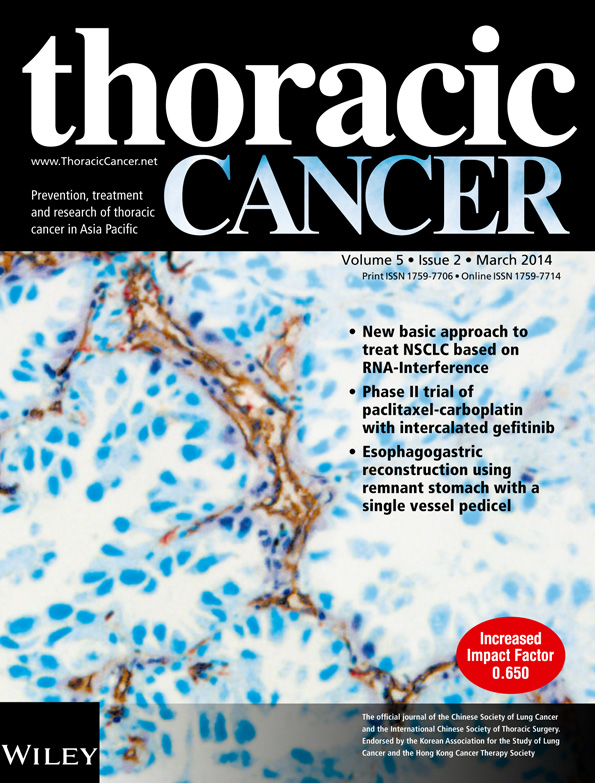Outcome of active anti-cancer treatment in elderly patients with advanced non-small cell lung cancer: A single center experience
Abstract
Background
This study aimed to evaluate the characteristics of active anti-cancer treatment (AAT) compared with best supportive care (BSC) in elderly patients with advanced non-small cell lung cancer (NSCLC).
Methods
A retrospective analysis of 144 patients, aged 70 or older, with stage IIIb/IV NSCLC from 672 patients with confirmed lung cancer, was conducted.
Results
Median age at diagnosis was 77 years and median survival time was five months. On multivariate analysis, AAT independently contributed to a decreased hazard ratio of death (P = 0.04), whereas male gender (P = 0.004), a body mass index of less than 18.5 (P = 0.004), and a poor performance score were associated with an increased risk of death (P < 0.001). The 52 subjects receiving AAT experienced longer survival than the 92 subjects receiving BSC (median seven months [AAT] versus three months [BSC]; P < 0.001). When sub-classified into five-year age intervals, AAT was a significant advantage in overall survival (OS) to patients aged 70–74, but not to those ≥75 years old.
Conclusions
AAT for patients ≥70 years old with advanced NSCLC extended OS. However, care should be taken in decisions on active anti-cancer treatments for patients over 75 years old. A prospective multicenter trial is required in the near future.




